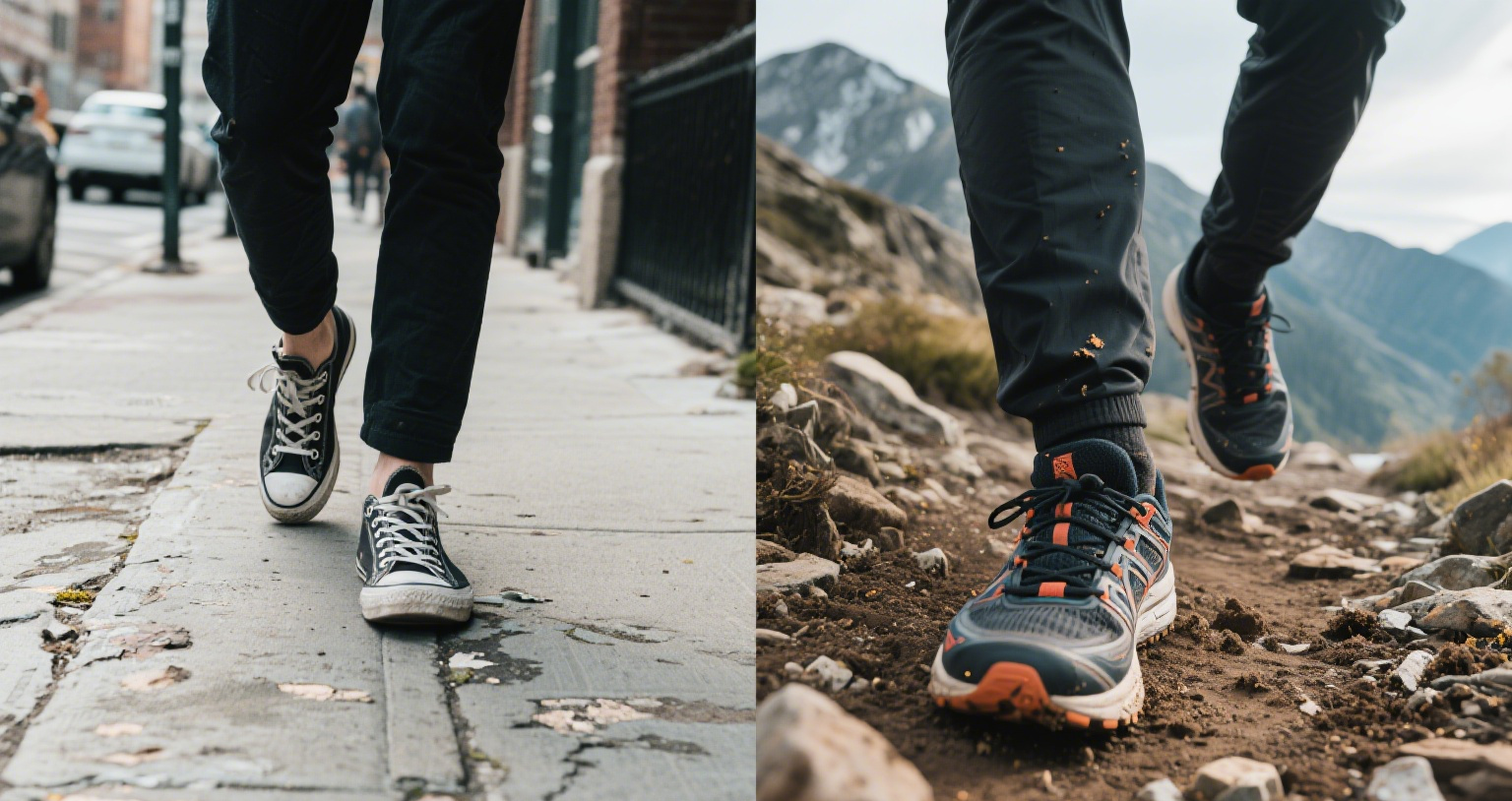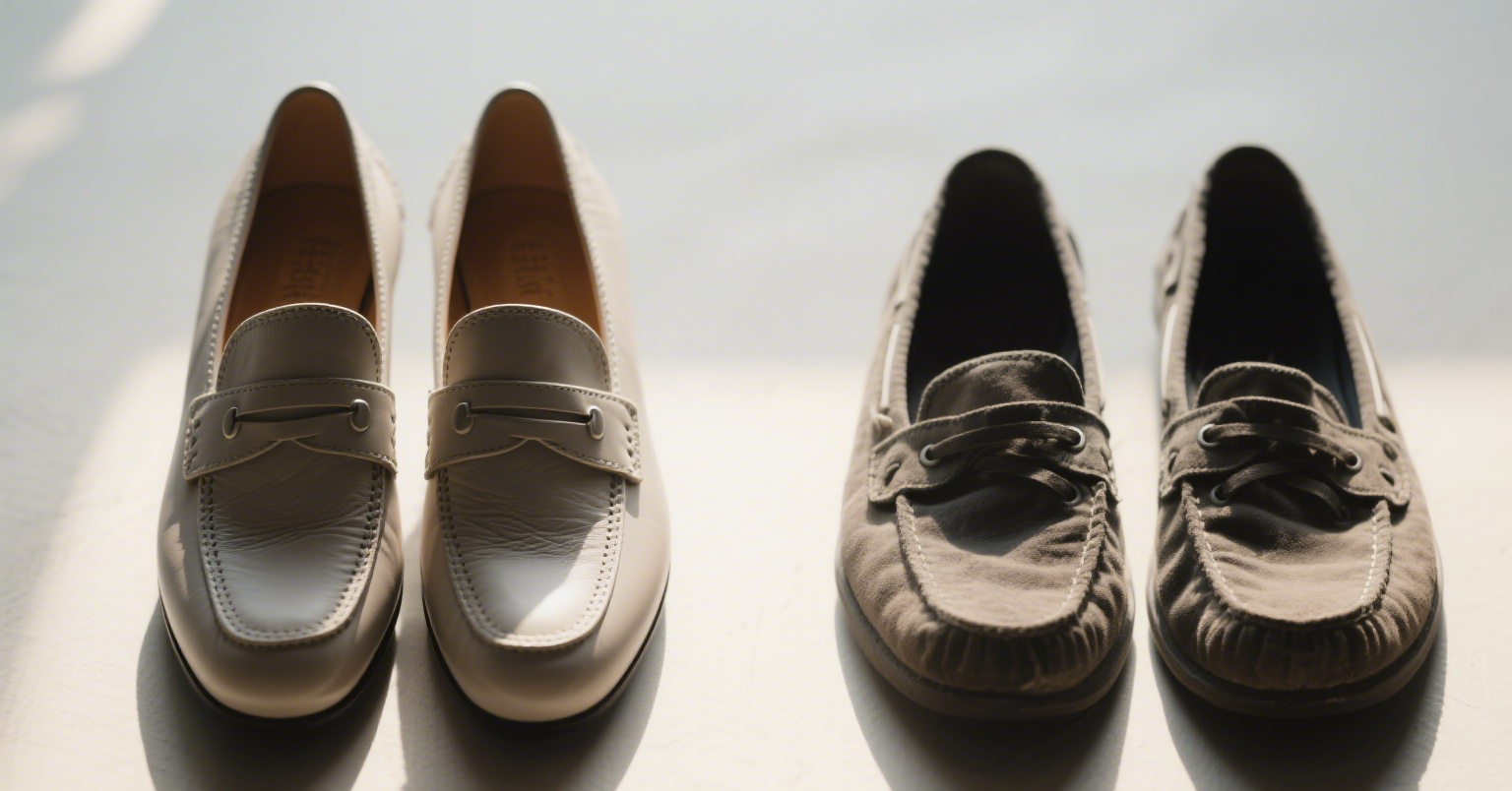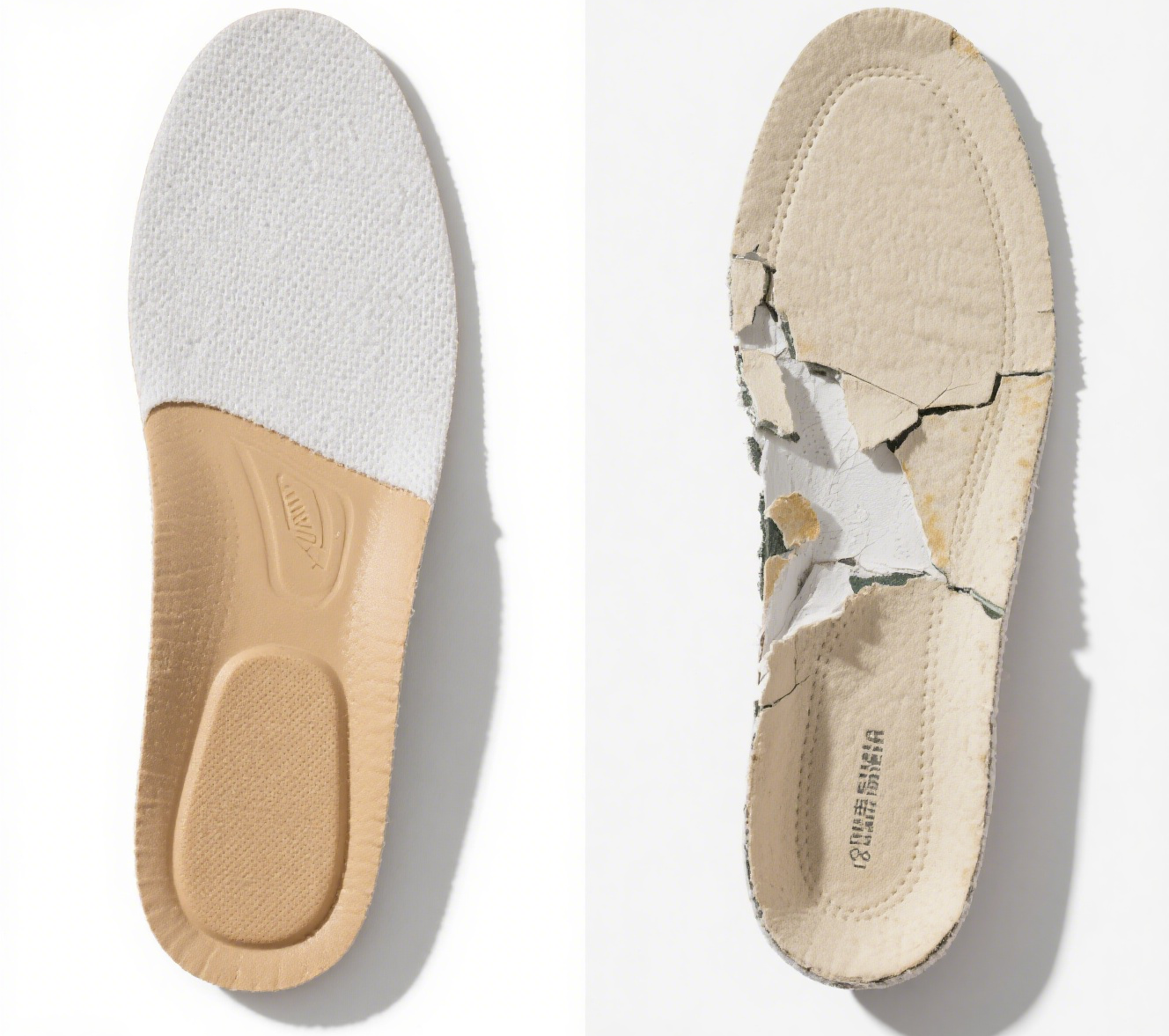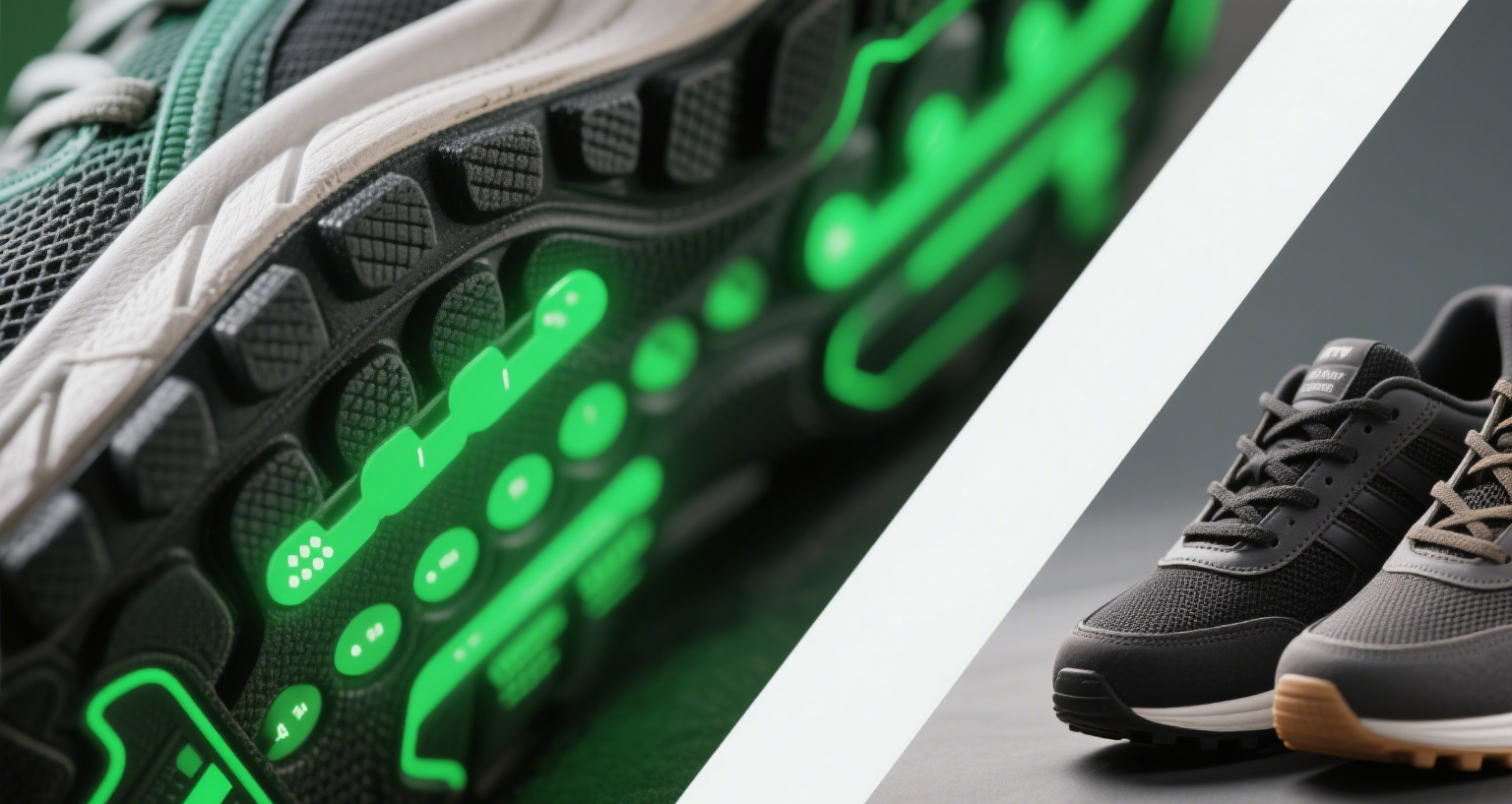Are you wondering if shelling out more cash for designer or high-end shoes genuinely translates into better support and health for your feet? It's a common question with a nuanced answer.
Expensive shoes are often, but not always, better for your feet primarily because they frequently utilize higher quality materials, employ superior construction methods, and incorporate more ergonomic design principles. These factors can lead to better cushioning, arch support, and overall foot stability compared to cheaper alternatives that might prioritize aesthetics or low cost over anatomical design and durability. However, "expensive" doesn't automatically equate to "better for your feet" without considering individual foot mechanics and specific footwear needs.
 As someone at Lucas who has seen shoes built from the ground up for over two decades, I know that the materials and construction matter. While price can be an indicator, it's the underlying components and design philosophy that truly determine foot health benefits.
As someone at Lucas who has seen shoes built from the ground up for over two decades, I know that the materials and construction matter. While price can be an indicator, it's the underlying components and design philosophy that truly determine foot health benefits.
Do designer shoes offer better support than cheaper ones?
Are you questioning if the hefty price tag on designer shoes correlates with superior foot support compared to their more affordable counterparts? The answer is often yes, but with caveats.
Designer shoes frequently offer better support than cheaper ones due to their use of higher-grade materials for midsoles and insoles, more advanced anatomical lasts (the foot-shaped mold shoes are built around), and superior construction techniques that integrate support features more effectively. While mass-produced cheaper shoes may include basic support elements, designer shoes typically invest more in research and development to achieve ergonomic designs that cater better to foot mechanics, resulting in enhanced arch support, cushioning, and stability.
 From my experience in footwear manufacturing at Lucas, the details make all the difference. Higher quality components and more precise engineering, often found in designer shoes, certainly contribute to better support.
From my experience in footwear manufacturing at Lucas, the details make all the difference. Higher quality components and more precise engineering, often found in designer shoes, certainly contribute to better support.
The Support Factor: Designer vs. Cheaper Shoes
The support offered by a shoe is critical for foot health, alignment, and overall comfort. Here’s how designer shoes often gain an edge:
- 1. Superior Lasts and Anatomical Design:
- Designer Shoes: High-end brands often invest in developing sophisticated lasts that more accurately mimic the natural contours of the human foot. These lasts account for arch shape, heel curvature, and toe splay, leading to a more ergonomic fit. The design process often includes extensive anatomical research.
- Cheaper Shoes: Tend to use more generic, simpler lasts that prioritize ease of mass production over precise anatomical fit. This can result in less targeted support or pressure points.
- 2. Quality of Midsoles and Insoles:
- Designer Shoes: Utilize advanced materials for midsoles (the layer between the insole and outsole) such as high-density EVA, PU (polyurethane), or specialized foams that offer durable cushioning and responsive support. Insoles are often multi-layered, contoured, and made from materials that mold to the foot over time, providing customized arch support.
- Cheaper Shoes: Often use basic, low-density EVA or simple foam for midsoles that compress quickly and lose their cushioning properties. Insoles are typically flat, thin, and offer minimal arch support or shock absorption.
- 3. Construction Techniques:
- Designer Shoes: Employ construction methods that enhance support and durability, such as Blake stitching, Goodyear welting (for structured, resolable shoes), or advanced cementing techniques that create a stable bond between upper and sole. Strategic reinforcement in key areas (e.g., heel counter, toe box) provides better stability.
- Cheaper Shoes: Rely on simpler, faster, and less durable cementing methods. Reinforcements may be minimal or made from flimsy materials, leading to shoes that quickly lose their shape and supportive qualities.
- 4. Materials for Upper and Lining:
- Designer Shoes: Use supple, high-quality leathers or advanced textiles for the upper that conform to the foot while providing structured support. Linings are often breathable, moisture-wicking, and soft, preventing irritation and maintaining foot health.
- Cheaper Shoes: Utilize stiff, synthetic materials that don't conform well to the foot, can be less breathable, and may not offer much structural support, potentially leading to rubbing or blistering.
- 5. Research and Development Investment:
- High-end brands can afford to invest heavily in biomechanical research, testing, and incorporating insights from podiatrists or sports scientists. This leads to features specifically designed to enhance stability, reduce pronation/supination, and distribute pressure evenly across the foot.
While designer shoes generally offer superior support due to these factors, it is crucial to remember that good support also depends on a shoe being the right type and fit for an individual's specific foot type and activity. Even the most expensive shoe won't offer good support if it's the wrong size or style for your needs.
| Support Feature | Designer Shoes (Typical) | Cheaper Shoes (Typical) |
|---|---|---|
| Last/Anatomical Design | Sophisticated, contoured to foot; ergonomic focus. | Generic, simpler; mass-production oriented. |
| Midsole/Insole Materials | High-density, resilient foams (EVA, PU); multi-layered, contoured. | Low-density foam; thin, flat, quick compression/loss of support. |
| Construction Method | Blake-stitched, Goodyear-welted, advanced cementing; structured. | Simple, less durable cementing; quick loss of shape. |
| Upper/Lining Materials | Supple leather, advanced textiles; breathable, conforming. | Stiff synthetics; less breathable, poor conformity. |
| R&D Investment | Significant; incorporates biomechanical research for stability. | Minimal; basic design, less focus on foot mechanics. |
Do high-end shoes use better materials for foot support?
Are you examining whether the materials used in high-end shoes genuinely provide better foot support than those in more affordable footwear? Material quality is a significant factor.
Yes, high-end shoes typically use demonstrably better materials for foot support compared to cheaper alternatives. These materials include superior grades of leather for upper construction that molds to the foot, advanced composite materials or high-resilience foams (like specialized EVA or PU) for midsoles and insoles that offer durable cushioning and energy return, and robust components for shanks and heel counters that reinforce stability. Cheaper shoes often compromise on these materials, opting for less durable and less supportive synthetics or basic foams that quickly degrade.
As a manufacturer at Lucas, I can confirm that the quality of raw materials directly impacts a shoe's supportive properties. There's a clear difference in the performance and longevity of a premium material versus a budget one.
Material Superiority in High-End Footwear
The type and quality of materials used in a shoe play a crucial role in its ability to provide effective and lasting foot support. High-end shoes differentiate themselves here.
- 1. Uppers (Leather and Textiles):
- High-End: Often uses full-grain or top-grain leather, which is known for its durability, breathability, and ability to conform to the foot over time, providing a custom-like supportive fit. For performance shoes, advanced technical textiles are engineered for specific support, flexibility, and breathability.
- Cheaper: Typically uses corrected-grain leather, bonded leather, or synthetic materials (PU-coated, PVC) that are less breathable, stiffer, and do not mold to the foot, offering less dynamic support. They are prone to cracking and breakdown.
- 2. Midsoles (Cushioning and Shock Absorption):
- High-End: Incorporates advanced cushioning systems using specialized foams like high-density EVA, resilient polyurethane (PU), or proprietary brand-specific technologies (e.g., Nike's Air, Adidas' Boost, specific gel inserts). These materials offer consistent, long-lasting shock absorption, energy return, and maintain their supportive qualities over time.
- Cheaper: Relies on basic, low-density EVA foam that compresses quickly and loses its cushioning and supportive properties, often feeling "flat" after minimal wear. These materials provide very little rebound or long-term support.
- 3. Insoles/Footbeds (Arch Support and Contouring):
- High-End: Features anatomically contoured footbeds, often removable and replaceable, made from materials like memory foam, cork, or multi-density layered foams. These insoles provide targeted arch support, heel stability, and cushioning that adapts to the wearer's foot.
- Cheaper: Generally includes flat, thin, non-removable insoles made from standard foam or thin fabric, offering negligible arch support or customized cushioning.
- 4. Outsoles (Traction and Stability):
- High-End: Uses durable rubber compounds (e.g., Vibram, specific carbon rubbers) that provide superior traction and abrasion resistance. The outsole design often includes specific tread patterns or flex grooves that contribute to stability and foot movement.
- Cheaper: May use less durable, softer rubber, or even plastic compounds that wear out quickly, offer poor traction, and contribute less to the overall stability of the shoe.
- 5. Internal Components (Shanks, Heel Counters):
- High-End: Utilizes strong, rigid materials like fiberglass, carbon fiber, or sturdy plastic for shanks (which support the arch and provide torsional rigidity) and firm heel counters (which stabilize the heel).
- Cheaper: May use flimsier plastic or cardboard materials for internal support structures that quickly buckle or lose their supportive integrity, leading to instability.
The consistent use of these superior materials across all components of the shoe allows high-end footwear to maintain its structural integrity, cushioning, and supportive benefits over a much longer period than cheaper alternatives.
| Material Component | High-End Shoes (Typical) | Cheaper Shoes (Typical) |
|---|---|---|
| Uppers | Full/top-grain leather, engineered performance textiles. | Corrected-grain/bonded leather, synthetic PU/PVC, basic fabrics. |
| Midsoles | High-density EVA, PU, proprietary foams, gel, air units. | Low-density EVA foam, quickly compressed and flat. |
| Insoles/Footbeds | Anatomically contoured memory foam, cork, multi-density layers. | Flat, thin, standard foam or fabric, minimal support. |
| Outsoles | Durable rubber compounds (Vibram), specific traction patterns. | Softer rubber, plastic compounds; poor durability/traction. |
| Internal Structures | Strong shanks (fiberglass, carbon), firm heel counters. | Flimsy plastic or cardboard for shanks/heel counters, poor stability. |
Are sustainable/eco-friendly shoes healthier for your feet?
Are you connecting the dots between sustainable and eco-friendly footwear and its potential benefits for your foot health? It's an interesting intersection of ethics and ergonomics.
Sustainable or eco-friendly shoes can be healthier for your feet, but this is not always inherently true or guaranteed. They often utilize natural, breathable, and non-toxic materials (like organic cotton, cork, recycled rubber, or plant-based leathers) that can promote better foot ventilation and reduce exposure to harsh chemicals found in some conventional synthetic footwear. However, the exact health benefits depend on the specific design, construction, and supportive features rather than just the eco-friendliness of the materials.
 As a manufacturer working towards more sustainable practices at Lucas, I see the potential. Using breathable, natural materials is generally good for feet. But a shoe's design for support is a separate critical factor from its eco-credentials.
As a manufacturer working towards more sustainable practices at Lucas, I see the potential. Using breathable, natural materials is generally good for feet. But a shoe's design for support is a separate critical factor from its eco-credentials.
Sustainability and Foot Health: A Closer Look
The relationship between sustainability and foot health is not always direct, but there are several areas where convergence occurs.
- 1. Breathability of Natural Materials:
- Benefit for Feet: Many sustainable shoes prioritize natural or recycled materials for their uppers and linings, such as organic cotton, hemp, natural rubber, cork, or biodegradable plant-based leathers. These materials often have superior breathability compared to conventional synthetic alternatives (like PVC or certain nylons). Better breathability helps regulate foot temperature, dissipate moisture, and reduce the risk of fungal infections or odor, contributing to overall foot hygiene and comfort.
- Caution: Not all "eco-friendly" materials are equally breathable, and the shoe's design can still inhibit airflow.
- 2. Reduced Exposure to Harmful Chemicals:
- Benefit for Feet: Sustainable brands often commit to reducing or eliminating toxic chemicals (e.g., heavy metals in tanning, harsh dyes, certain adhesives) in their manufacturing processes. This can be beneficial for sensitive skin or those prone to allergic reactions, as it limits direct contact with potential irritants.
- Caution: The presence of some chemicals is often unavoidable in shoe manufacturing, and "non-toxic" claims need verification.
- 3. Durability and Longevity (for some sustainable shoes):
- Benefit for Feet: Some sustainable approaches focus on creating durable, long-lasting shoes to reduce waste. Shoes that last longer maintain their supportive properties over time, unlike shoes that quickly break down and lose their structure.
- Caution: Not all budget-friendly sustainable shoes focus on durability; some may use lightweight, less robust eco-materials that might not offer extended support.
- 4. Focus on Comfort and Natural Foot Movement:
- Benefit for Feet: Many sustainable footwear brands are also aligned with minimalist or "barefoot" shoe movements, which advocate for designs that promote natural foot movement, splay, and strengthening. While not suitable for everyone, for some, this can lead to stronger, healthier feet over time by reducing reliance on artificial support.
- Caution: Minimalist or barefoot shoes are not "healthier" for all feet, especially those requiring significant arch support or cushioning. Correct transition and understanding of foot type are crucial.
- 5. Recycled Materials vs. Performance:
- Caution: While recycled materials are great for the planet, their performance in terms of cushioning, responsiveness, and long-term support needs careful evaluation. A midsole made from recycled plastic might be eco-friendly but could lack the desired supportive properties of virgin, performance-engineered foams unless specifically designed and tested for it.
In summary, while sustainable practices do often lead to shoes made with more breathable and less toxic materials, which can contribute positively to foot health, the primary drivers of true foot support and comfort remain the shoe's design, construction, and specific features, regardless of its eco-credentials. Consumers should look for sustainable shoes that also explicitly prioritize ergonomic design and appropriate supportive elements for their individual needs.
| Aspect of Sustainability | Potential Benefit for Feet | Important Caveat |
|---|---|---|
| Breathable Materials | Improved ventilation, moisture management, reduced odors/fungi. | Not all eco-materials are equally breathable; design matters. |
| Reduced Chemical Exposure | Less irritation, especially for sensitive skin/allergies. | "Non-toxic" claims need verification; some chemicals are necessary. |
| Focus on Durability | Shoes maintain supportive structure longer; less waste. | Not all eco-shoes are durable; material choices vary widely. |
| Natural Foot Movement | Promotes foot strengthening, natural alignment (minimalist designs). | Not suitable for all foot types; requires careful transition. |
| Recycled Material Performance | Eco-friendly. | Performance (cushioning, support, durability) needs careful design. |
Conclusion While often more expensive, designer shoes typically offer better foot support due to superior materials, advanced anatomical designs, and robust construction. These quality materials, including improved midsoles and internal components, provide lasting cushioning and stability not found in cheaper alternatives. Sustainable shoes can be healthier due to breathable, non-toxic materials, but their primary ergonomic benefits ultimately depend on their specific design and supportive features, not just their eco-friendly status.
